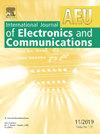一种用于性能优化升压集成t型多电平逆变器的新型非对称空间矢量调制技术
IF 3.2
3区 计算机科学
Q2 ENGINEERING, ELECTRICAL & ELECTRONIC
Aeu-International Journal of Electronics and Communications
Pub Date : 2025-07-16
DOI:10.1016/j.aeue.2025.155952
引用次数: 0
摘要
针对中性点电压不平衡问题,提出了一种升压集成t型多电平逆变器。所提出的变换器是通过修改t型升压逆变器的中性点连接到正直流电源来设计的,从而导致每个极的电压水平不对称。由于单极电压的变化特性,传统的空间矢量调制是不可行的。为此,提出了一种利用非对称电压电平并结合直流母线箝位特性的新型非对称空间矢量调制(ASVM)。为了验证所提出的方法,开发了一个1 kW的原型,并在不同的占空比和调制指标下测试了控制技术,以达到所需的输出电压,强调了选择最佳工作点的重要性。实验结果和效率分析证明了所提出的PWM技术在利用不对称电压电平,实现更低的THD和减少输出端的开关损耗方面的有效性。本文章由计算机程序翻译,如有差异,请以英文原文为准。
A novel asymmetric space vector modulation technique for performance-optimized boost integrated T-type multilevel inverter
This paper presents a boost-integrated T-type multilevel inverter (MLI) to address the issue of neutral point voltage unbalancing. The proposed converter is designed by modifying the neutral point connection of the T-type boost inverter to the positive DC supply, resulting in asymmetric voltage levels at each pole. Due to the varying nature of one pole voltage, conventional space vector modulation is not feasible. Hence, a novel asymmetric space vector modulation (ASVM) is proposed by utilizing the asymmetric voltage levels while integrating the feature of DC-bus clamping. To validate the proposed approach, a 1 kW prototype is developed, and the control techniques are tested across diverse duty cycles and modulation indices to achieve the desired output voltage, emphasising the importance of selecting the optimal operating point. Experimental results and efficiency analysis demonstrate the effectiveness of the proposed PWM technique in utilising asymmetric voltage levels, achieving lower THD and reduced switching losses at the output.
求助全文
通过发布文献求助,成功后即可免费获取论文全文。
去求助
来源期刊
CiteScore
6.90
自引率
18.80%
发文量
292
审稿时长
4.9 months
期刊介绍:
AEÜ is an international scientific journal which publishes both original works and invited tutorials. The journal''s scope covers all aspects of theory and design of circuits, systems and devices for electronics, signal processing, and communication, including:
signal and system theory, digital signal processing
network theory and circuit design
information theory, communication theory and techniques, modulation, source and channel coding
switching theory and techniques, communication protocols
optical communications
microwave theory and techniques, radar, sonar
antennas, wave propagation
AEÜ publishes full papers and letters with very short turn around time but a high standard review process. Review cycles are typically finished within twelve weeks by application of modern electronic communication facilities.

 求助内容:
求助内容: 应助结果提醒方式:
应助结果提醒方式:


